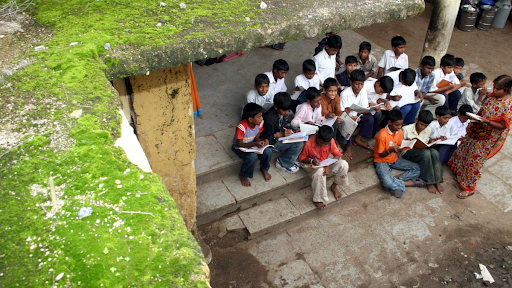



India faces an employability crisis as outdated education fails to match industry needs. Graduates lack technical and soft skills, leading to high educated unemployment. NEP 2020 reforms fall short due to poor industry integration. Experts urge industry-aligned curricula, practical training, faculty reform, and innovation-driven, transparent governance in higher education.

Copyright infringement not intended
Picture Courtesy: THE HINDU
India’s education system fails to align with employability, leaving graduates jobless despite reforms.
India produces millions of graduates yearly, but many struggle to find jobs matching their education. In 2024, only 42.6% of graduates are employable, a drop from 44.3% in 2023, according to the Mercer Mettl India Graduate Skill Index 2025.
Only 46% are ready for AI and machine learning roles, despite these being high-demand fields. Non-technical skills like communication, creativity, and critical thinking are even weaker, with employability in roles like HR (39.9%) and digital marketing (41%) lagging.
What is the root of the problem?
The education system stresses rote learning over practical skills, critical thinking, and problem-solving.
Colleges teach outdated syllabus, leaving students unprepared for fast-changing industries like IT, AI, and data analytics.
The Economic Survey 2023-24 notes that only 51.3% of graduates are employable, up from 34% a decade ago.
Experts call this the problem of “educated unemployment,” where degrees don’t translate into jobs. This mismatch fuels unemployment rates, with 29.1% of graduates jobless compared to 3.4% of those without formal education.
National Education Policy (NEP) 2020
The NEP 2020 aims to transform India’s education system by 2035, targeting a 50% Gross Enrolment Ratio (GER) in higher education (up from 26.3% in 2022) and integrating vocational training, flexible curricula, and mother-tongue learning.
The government claims NEP will spark an “educational renaissance” with initiatives like Atal Tinkering Labs, coding in schools, and inclusive teacher recruitment.
Critics say NEP’s “multiple entry and exit” system, meant to offer flexible degree pathways, has led to low-paying e-commerce jobs rather than quality employment.
The policy’s focus on Indian Knowledge Systems and changing textbooks lacks clear methods to improve employability.
The NEP drafting committee excluded industry experts, making it disconnected from market needs.
|
A good education balances “depth” (technical expertise for jobs) and “breadth” (flexibility to adapt to change, especially in AI-driven markets). India’s system lacks both.
|
Misleading Claims About Global Rankings
The government advertises that 11 Indian universities rank in the QS World University Rankings (WUR) top 500, reporting a 318% performance increase among G-20 nations.
Experts accuse the government of ignoring the commercial motives of ranking agencies like QS and Times Higher Education (THE), which may inflate India’s progress to attract business. For example, the Indian Institute of Technology Delhi ranks 28th globally for employability, but India lags in “skills fit” and “future-oriented innovation.”
|
India’s Global Innovation Index (GII) rank improved from 81 in 2015 to 39 in 2024, but it trails Malaysia (33) and Türkiye (37). The GII measures patent applications and scientific publications, where India underperforms. |
Industry-aligned education => Include industry experts in curriculum design to teach relevant skills.
Practical training => Expand programs like Live-in-Labs and competitive programming to build real-world skills.
Faculty reform => Train and retain quality faculty, as China has done, to improve teaching.
Indigenous innovation => Increase R&D investment to promote indigenous technology and high-tech start-ups.
Transparency => Publish outcomes of mega projects to ensure taxpayer money delivers value.
Abolish UGC => Free universities from bureaucratic control to innovate and align with industry.
Must Read Articles:
INDIA EMPLOYMENT TRENDS AND STATISTICS
INDIA AS A GLOBAL SKILL SUPPLIER
Source:
|
PRACTICE QUESTION Q. The mismatch between academic curriculum and industry requirements remains a major obstacle to youth employment. Critically analyze the issue and suggest suitable reforms. |






© 2026 iasgyan. All right reserved